Tasman discovered this new epithermal-style system in mid-2005, following regional targeting of the area and the follow-up of anomalous geochemistry from previous explorers. The project is located about 60km west of Port Augusta in South Australia, and is strategically well located close to major highways and infrastructure and regional centres. Mineralisation is mostly hosted by the Mesoproterozoic-age Corunna Conglomerate and is characterised by quartz veining with sericite, chlorite and sulphide alteration halos, and occurs over about 4.5km². Tasman’s initial drilling returned intersections up to 3.4g/t Au and 45g/t Ag over 3m, with thick zones of low grade lead and zinc (eg. 96m at 0.2% Pb and 27m at 0.4% Zn). The first follow up diamond drill hole returned a 1.66m intersection of 7.6% Pb, 10.5% Zn, 0.4% Cu, 1.2g/t Au and 120g/t Ag.
In 2007 an intersection of 21m at 21g/t Au and 83g/t Ag (including 9m at 31g/t Au and 152g/t Ag) was obtained in a vertical diamond drill hole. This encouraging result has been followed up with further drill holes, but unfortunately this high grade mineralisation appears to be fairly limited in extent. Further drilling, designed to follow up encouraging thick zones of associated lead-zinc mineralisation hit in previous drilling is being considered.
In 2014 Tasman reassessed the potential of the project in the light of recent discoveries and developments in the region. For example, in October 2013 Investigator Resources Ltd announced an Inferred Mineral Resource containing 20Moz of silver at its Paris Project located to the west of Tasman’s Parkinson Dam Project in a similar regional geological position.
It had been clear for some time that a large area (stretching for at least 125km), located immediately south of the southern margin of the Gawler Range Volcanics in South Australia (see Figure 1 below) has potential for shallow epithermal gold-silver and base metal (lead-zinc-silver) deposits. In addition to Paris, significant occurrences in the area include the Menninnie Dam silver-lead-zinc deposit, Weednanna gold prospect, Uno/Morgans (gold, silver, copper prospects) and others. Tasman’s Parkinson Dam prospect occurs on the eastern limit of this large area of interest, but has not been explored at all over the large western portion of the tenement immediately adjacent to but south of the Gawler Range Volcanics (about 18 km2, see Figures 1 and 2). A follow up exploration program including surface geochemistry and aircore drilling located the Corrie Dam prospect (refer below).
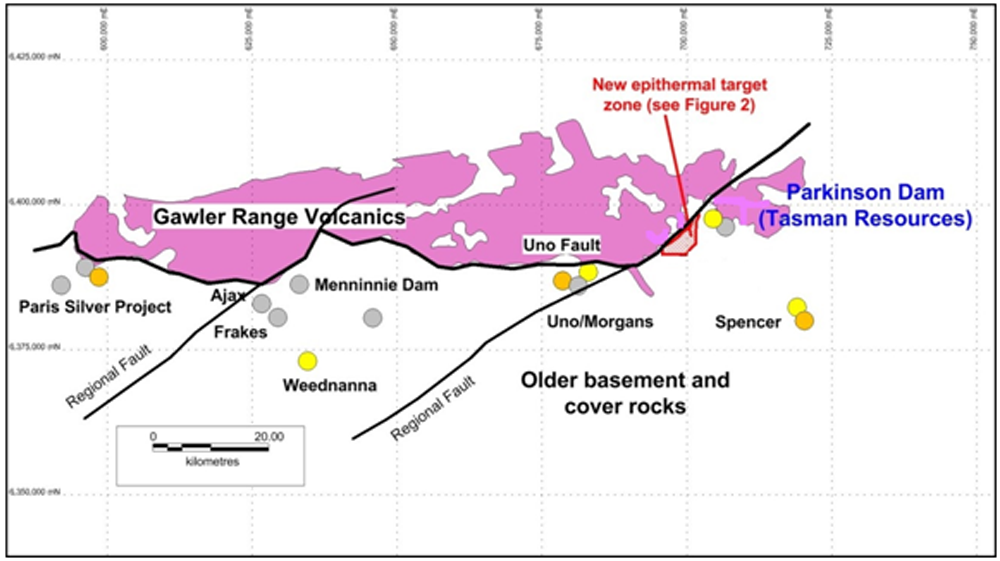
(GDA 94; Zone 53).
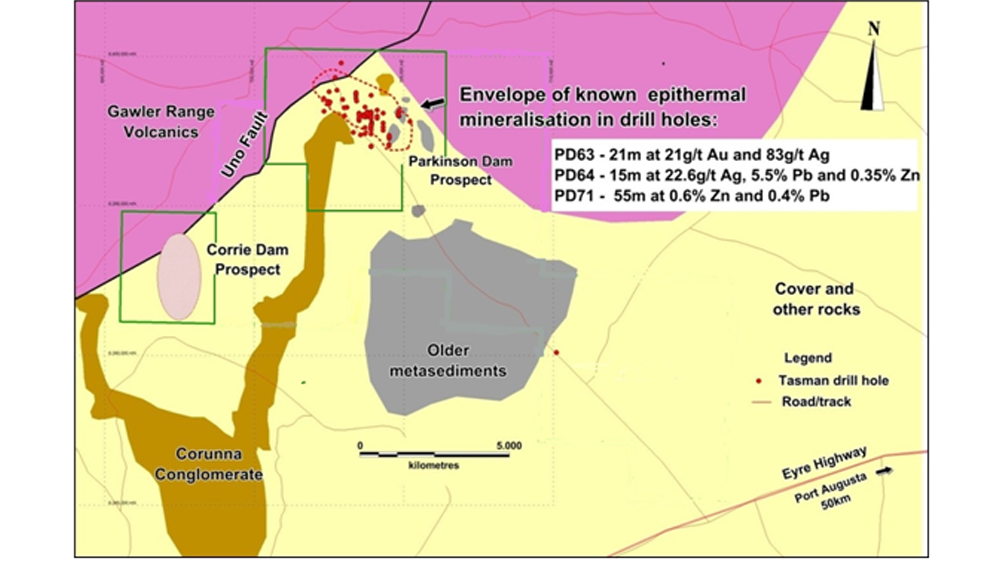
(GDA 94; Zone 53).
Figures 3 & 4 show epithermal quartz veins and mineralised drill core from the area of known epithermal mineralisation shown in Figure 2.
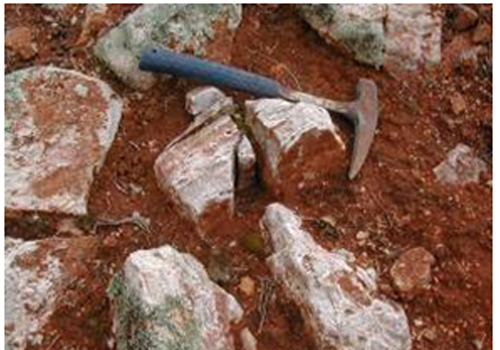
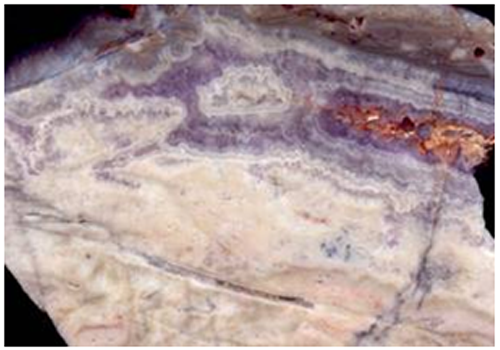
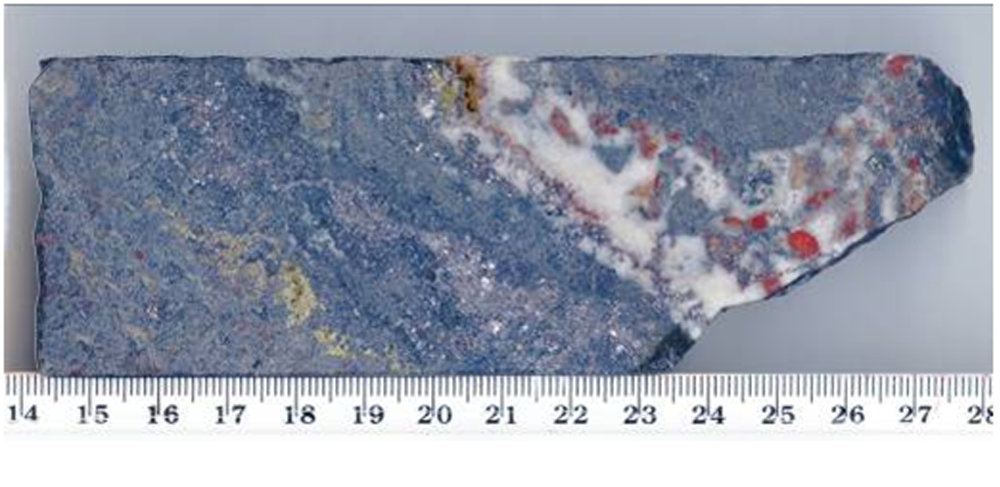
Corrie Dam Prospect
Partial leach soil sampling carried out in the western portion of the tenement area in 2014 defined a significant silver anomaly (Corrie Dam prospect, Figure 2) with a peak value of 630ppb within a +100ppb zone having a strike length of 1.5km and a maximum width of 480m (Figure 5). Background levels are approx. 20ppb Ag.
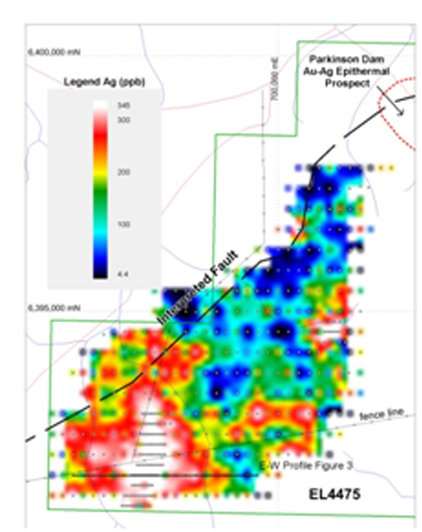
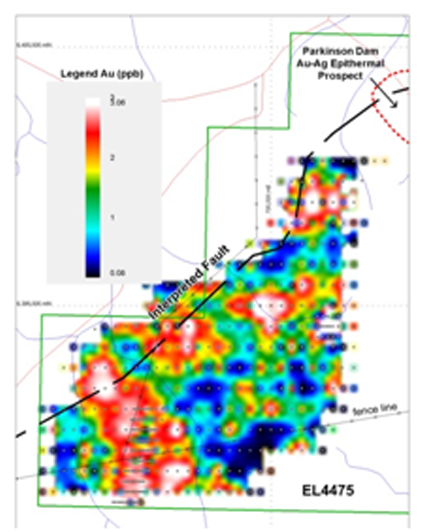
The Corrie Dam silver anomaly was tested by air core drilling on 5 traverses totalling 38 holes for 2,840m (Figure 6) in 2015. The deepest holes were 99m.
Drilling intersected strongly anomalous lead and silver values in fine grained sediments and altered high level felsic intrusives under the southern portion of the silver anomaly. These may represent the outer low grade halo around more significant epithermal mineralisation at depth.
The best drill intersection was 25m down hole at 0.36% Pb and 1.4g/t Ag from 60m in hole CDAC015, including 5m at 1.1% Pb and 2.6g/t Ag from 70m. The highest silver assays up to 33g/t over 4m appear to be supergene in origin having been concentrated by the weathering of lower grade mineralisation.
Strongly anomalous but lower level silver and lead values were also intersected in adjacent holes (refer Figure 7 showing these drill hole traces with Ag and Pb bar graphs).
The anomalous base metal intersections in CDAC 015 and some of the other holes are very similar in style and tenor to the large halo of low grade mineralisation that surrounds high grade epithermal gold mineralisation at Parkinson Dam 8km to the north-east.
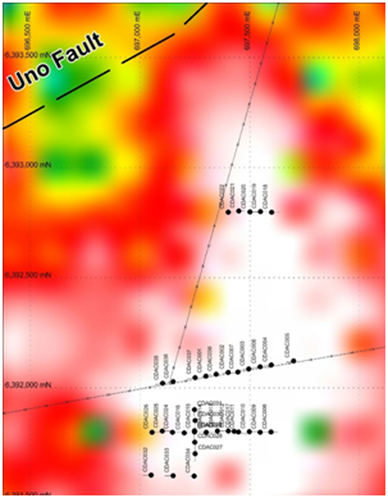
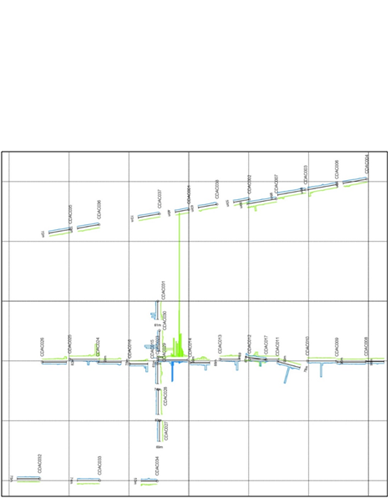
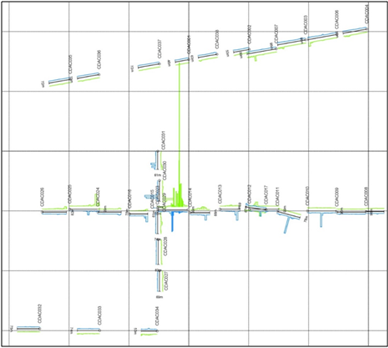
A joint venture partner is currently being sought to continue exploration of this project.





